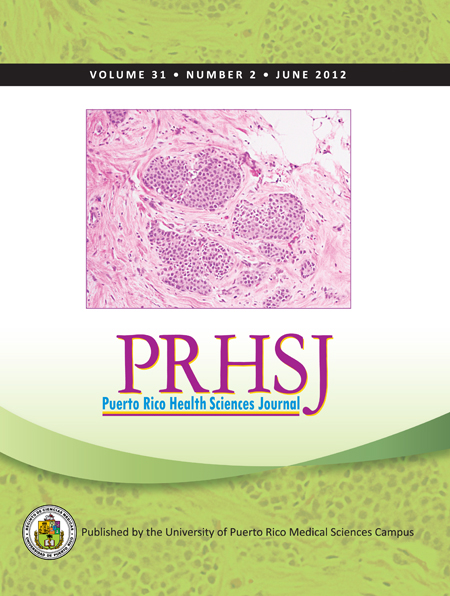Abstract
Objective: Triple-negative breast cancer (TNBC) demonstrates unique clinicopathological characteristics and survival outcomes. Several studies have documented important disparities in Hispanic women compared to other racial/ethnic groups; nevertheless, data on this entity in a population based Latin country are very limited. Our goal was to assess demographic and clinicopathological characteristics in essentially a pure population of Puerto Rican females with TNBC residing in Puerto Rico, as well as to determine their overall survival and progression-free survival in order to compare with published data. Methods: By searching the electronic medical records data base, 54 patients were identified as TNBC. The median follow-up period was 25 months (range, 2-78). Univariate analysis of pretreatment risk factors was conducted. Results: The median age at diagnosis was 55 years. Of 54 cases, 51 had stage I-III presentation. T1/T2 tumors were found in 88.9% and absence of nodal involvement in 68.5%. Prognostic factors for progression free survival (PFS) that were statistically significant were lymph node involvement (p=0.02), tumor size > 2 cm (p=0.037) and stage IV (p=0.00002). The 5-year overall survival and PFS were 81% and 80%, respectively. Conclusion: Results are very similar to published data on females from North America and Europe. Differences in clinical outcome and stage at diagnosis in Hispanic women with TNBC are more likely explained by socioeconomic status and adequate access to care, rather than biological/genetic differences. The association of triple negative breast cancer with poor prognosis deserves re-evaluation given that patients with negative node involvement and no metastasis appear to be highly curable.
Authors who publish with this journal agree to the following terms:
a. Authors retain copyright and grant the journal right of first publication with the work simultaneously licensed under a Creative Commons Attribution License that allows others to share the work with an acknowledgement of the work's authorship and initial publication in this journal.
b. Authors are able to enter into separate, additional contractual arrangements for the non-exclusive distribution of the journal's published version of the work (e.g., post it to an institutional repository or publish it in a book), with an acknowledgement of its initial publication in this journal.
c. Authors are permitted and encouraged to post their work online (e.g., in institutional repositories or on their website) prior to and during the submission process, as it can lead to productive exchanges, as well as earlier and greater citation of published work (See The Effect of Open Access).
